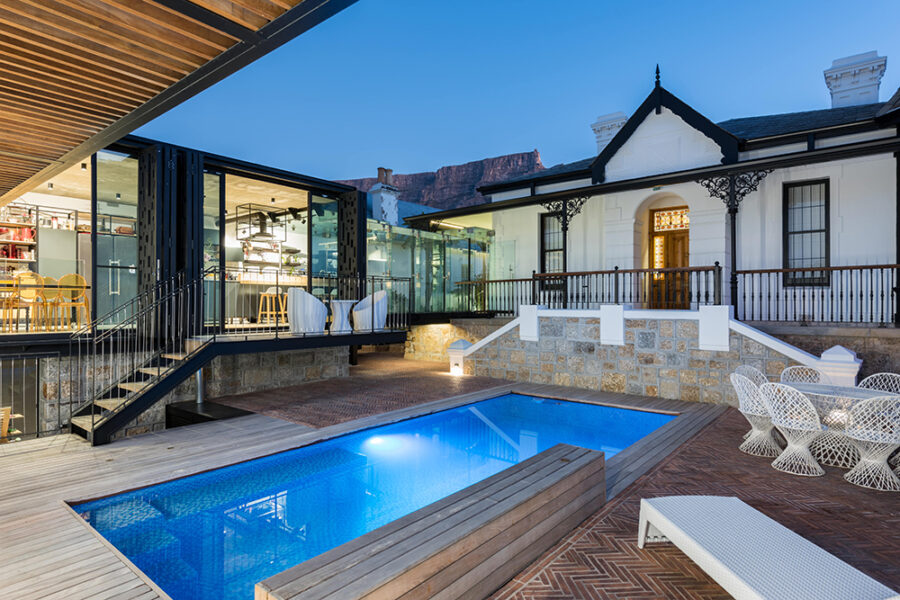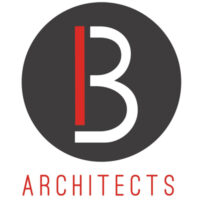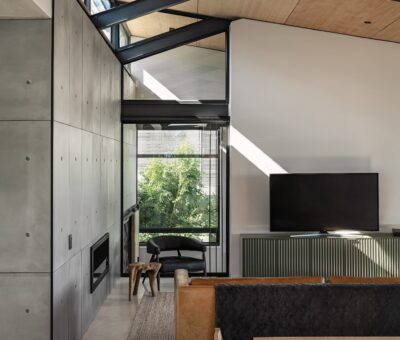Getting to Know Barak Mizrachi Architects
Heritage homes are a common occurrence in many cities around the world. It takes skill and great understanding to work on projects of this nature. Barak Mizrachi Architects is a Cape Town based architectural practice established in 2008, with a speciality in heritage buildings, both residential and commercial.
Barak Mizrachi Architects is a client driven practice. Understanding your wants, needs and budget are key aspects, above all. Working with you, the client, they can develop an architectural language that fulfils your lifestyle. Added to this is their own inspiration, uniquely brought to your building.
Furthermore, the firm engages in multi-faceted projects ranging from high end private residential, commercial, developments, and industrial buildings.
The Swellengrebel Pavilion Project:
Barak Mizrachi Architects was approached by the client to change the configuration of an existing house but also to create an extension, creating a connection with outdoor living spaces. This Victorian House is a grade 3A heritage building with high architectural significance.
We chatted to the team about this project, their inspirations and challenges of working on heritage homes….
What are the challenges in designing a Heritage home?
“Heritage buildings, first and foremost, need the appreciation of the architect and the client. When you respect what is there, it become a lot easier to work with it. We were fortunate that our client loved their house and wanted to preserve its original architectural features. Depending on the heritage classification, alterations and additions to existing spaces, doors, windows, ceilings, and floors are more restricting the higher the classification is. The key challenge we had was the connection between the old house and the new extension. Only one point of exit from the existing house was available to create that new connection. This side exit led to the old stoep, which meant that any new construction to the stoep needed to be reversable. We designed a floating bridge surrounded by glass ensuring the visibility of all the original architectural features. This is a heritage requirement, a way of ensuring that the old can be restored one day, if needed.
One a different note, working with heritage buildings is sustainable. One could argue that the very act of building new, is not sustainable in todays world. Re-purposing and re-inventing the spaces of old buildings is less invasive and damaging to the environment than building new structures.”
Tell us about the interior of the project at Swellengrebel Pavilion?
“The interiors of the project had to be sensitive to the heritage house. Our concept was to place new elements in a “loose” or “free standing” design. The concept of “reversable” plays a role, placing items without fixing them permanently. The Kitchen was treated as a contemporary Victorian Kitchen, essentially all the cupboards, appliances and shelving are placed as free standing, on legs and movable. Bathrooms were treated in the same manner, vanities, baths, and even the shower are all standalone items.
We developed a language of steel frames to keep the different designs through the old building and new extension consistent. Other aspects of finishes needed to be respectful of the old house, so simplicity was a key in choosing new floor finishes, we opted for raw concrete flooring to complement the existing Oregon Pine floors. Other finishes needed to be kept neutral, white cabinetry in simple steel frames, white subway tiles in bathrooms.”
What style of architecture are you drawn to?
“I can’t say that I have a particular style I am drawn too, at least not by name or definition. I am drawn to honest detail that expresses they way things are made. Natural materials in their raw form, concrete, steel, glass with all the nuts and bolts on display. Simple details, clean lines, and connections. I have a lot of appreciation for old buildings. Our new builds are contemporary in nature but appropriate to the context and the client’s brief.”
Who inspires you as a sculpture and architect?
“Frank Llyod Wright, Louis Kahn and Frank Gehry are a few of my favourite architects. I see them as both architects and sculptors.”
Your favourite furniture shop and local design hunts?
“Second-hand stores, my favourite place to go to for interior hunts is Kalk Bay.”
What artwork do you have in your collection?
“In contrast to architecture, where design must be functional and practical, creating artwork in clay allows me to create objects that do not require function or practicality. Moulding of clay with coils allows me to be flexible with the object I create. Architectural influence still run through the artworks with hints of geometry, precise patterns, and textures. My preferred glazes and textures are influenced by monotoned colours and metallic finishes such as steel and copper.”
Tell us about your most visited place to relax and rejuvenate in Africa?
“I enjoy the little towns, with lots of heritage, McGregor, Greyton and Riebeek Kasteel, places where there are lots of second-hand interior and food shops to browse.”
Any other projects you are busy on currently?
“Yes, we are currently working on two other heritage house projects in Tamboerskloof, both are highly sensitive sites with a large brief for full renovations and extensions. Aside from the heritage work we are also designing a new apartment building, for a joint venture of a Norwegian & German client.”
Take a look at the images here and see for yourself how a older home can be given new life. The existing house at Swellengrebel Pavilion was fully renovated in addition to the extension.
For more visit www.barakmizrachiarchitects.co.za.
You might also like...
-
ARRCC: Dopamine decor

In a world where bolder is better and personalisation is key, dopamine decor is becoming the next big thing in design. All about crafting spaces ...
-
IKON Aluminium™: The Power of Thoughtful Window & Door Selection

Architects play a crucial role in shaping modern living spaces, and the right fenestration choices can significantly impact a project’s aesthetics, functionality, and performance. Yet, ...
-
Float Concrete’s Guide to Energy-Smart Concrete Cladding

As architects and developers respond to the dual challenge of climate change and rising energy costs, the spotlight has shifted toward building materials ...
-
ARRCC: Inside The Villa that struck GOLD in this year’s Wan Awards

Renowned globally for their breathtaking work, the creatives behind Cape Town-based interior-design studio, ARRCC, have struck gold again. This time, walking away with the ...
































